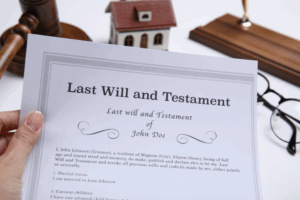Conventional financial wisdom suggests that the first thing a person should do after building the three to six month rainy-day fund is to maximize contributions to retirement accounts. Qualified retirement accounts offer a clear tax advantage: contributions are pre-tax, and therefore can reduce taxable income and the associated tax liability. Further, the money contributed grows tax-free until it is taken out of the account. Aside for some defined benefits plans (uncommon and outside the scope of this article), the strategy to allow a person to contribute the most dollars to retirement accounts is the 401(k). And, when the 401(k) is an “owner-only” or a “solo” 401(k), the advantages are even more powerful.
An owner-only 401(k) is a plan set up primarily for one person. The “one person” can be any self-employed worker without employees. This can be a consultant operating a solo consulting business. This can be a dentist or doctor or other professionals that set up their own company for independent contracting work or any other consultant operating as a solo consulting business. And, if a person has a job with a 401(k) plan already, but also has a side hustle (aka side job), an owner-only 401(k) is a good option for the side job as well – although the employee would be required to aggregate the plans to not exceed the combined contribution limits.
It might seem like a relatively simple idea. But, a look into the numbers can show how powerful this device can be. For simplicity, I will not provide age-distinction contribution numbers and all numbers are based on calendar year 2019.
An individual can contribute $6,000 a year to an IRA. The SIMPLE IRA retirement account maxes out at $13,000. Not bad.
But, a business owner can contribute much, much more to a 401(k). The overall contribution amount can be as high as $56,000. A portion of this $56,000 is the “employee” contribution that is maxed out at $19,000. The remaining amount (or $37,000) is the “employer” portion or “profit-sharing” contribution. Of course, when you have a small business with no other employees, then the employer and the employee are, for all intents and purposes, one and the same. The employer portion of the contribution is determined based on type of business entity: for sole proprietors or partnership-taxed entities (like multi-member LLCs), the employer portion cannot exceed 20% of net self-employment income; for corporations, the employer portion can be up to 25% of W-2 wage owner compensation.
Normally, the FICA tax of 15.3% is paid on wages, one-half by the employer and one-half by the employee; however, employer contributions to 401(k) plans are not subject to this 15.3% tax. But, here again, when the person is one and the same, then it results in 15.3% cost for the owner– or opportunity for savings with the owner-only 401(k) employer contribution.
Typically, an individual can no longer fully contribute to a Roth IRA once he or she has income over $137,000 ($203,000 for married filing jointly). However, when that same individual has an owner-only 401(k), then the employee can choose to contribute the employee portion to a Roth 401(k) even if otherwise ineligible for the Roth IRA. Though a Roth contribution is post-tax (a person does immediately pay income tax on the money), it grows and can be withdrawn tax-free at retirement age. The Roth election is particularly attractive for those that predict post-retirement income will be higher than current income.
One of the downsides to a traditional 401(k) is the expense associated with a “Third Party Administrator” or TPA. The TPA is responsible for reporting and processing and calculating the 401(k) plan activities. However, an owner-only 401(k) allows the owner to act as his or her own administrator and thus that cost is saved (though the plan owner may have to pay some relatively nominal administrative expenses). Further, when plans have less than $250,000, there is no requirement for the business to file an annual tax return for the plan (form 5500-EZ or 5500).
One exception to the no-employee rule mentioned above is the spouse. So, if the spouse of the owner works for the business and receives wages, then the spouse can participate in the plan and the amount saved and put into retirement accounts could double for the couple.
I should note that a Simplified Employee Pension (SEP) IRA is another great option for retirement savings and allows for the same total contribution level as a 401(k), but because it does not have an employee contribution it requires higher income to be able to max out contributions (25% of the salary). Also, the SEP does not allow any Roth contributions.
As with so many things in life, prior proper planning is the key. Talk to your financial advisor and tax consultant to see if the owner-only 401(k) is a good fit for you.
390477-2
* Licensed, not practicing.
The opinions voiced in this material are for general information only and not intended to provide specific advice or recommendations for any individual or entity. This information is not intended to be a substitute for specific individualized tax or legal advice. We suggest that you discuss your specific situation with a qualified tax or legal advisor.
A Roth IRA offers tax deferral on any earnings in the account. Qualified withdrawals of earnings from the account are tax-free. Withdrawals of earnings prior to age 59 1/2 or prior to the account being open for 5 years, whichever is later, may result in a 10% IRS penalty tax.
Contributions to a traditional IRA may be tax deductible in the contribution year, with current income tax due at withdrawal. Withdrawals prior to age 59 1/2 may result in a 10% IRA penalty tax in addition to current income tax.
Securities offered through LPL Financial, Member FINRA/SIPC. Investment Advice offered through Cornerstone Wealth Strategies, Inc., a registered investment advisor and separate entity from LPL Financial.












